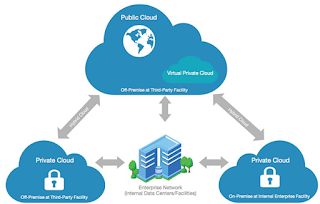How does Software Defined Networking (SDN) Work?
Visiting back,
SD-WAN is an acronym for software-defined networking in a wide area network (WAN). SD-WAN simplifies the management and operation of a WAN by decoupling (separating) the networking hardware from its control mechanism-Wikipedia
Since SD-WAN separates network mechanism (WAN architecture) from its control mechanism (Routing Protocols and decisions), the routing decisions for each request can be made intelligently. No longer does a data packet or an application request from the Branch office need to Travel Back to the data center for it to be routed. Intelligence is added at the branch office location itself so that traffic can be routed across the WAN for the highest performance and efficiency outputs.
How does SD-WAN work?
In a network infrastructure environment, there are two planes- the data plane and the control plane. In an SD-WAN environment, the two planes are separated.
However, in the traditional model, The Data plane and the control planes are not different layers in the network infrastructure. Traditional WAN Networks that use the MPLS technique relies on each piece of hardware to make forwarding decisions. In this case, a router receives an IP packet, determines where that packet needs to go based on its network-layer header, and sends it to the next node. Over large networks, multiple routers must continually make this decision. If a network contains ten routers and an application requires ten routing decisions, it means 10 routers x10 routing decisions =100 routing decisions would need to be distributed across the network!
The problem with this in Traditional WAN architecture is that the complexity gets out of hand very rapidly. Imagine if you are opening a new branch office. A network engineer needs to be deployed to set up the location. Besides, a network engineer needs to be deployed Each Time with every change to the application, change to the network layer. Even after the routers are mapped back to the data center from the branch office, we can never be sure of the integrity because it will be prone to human-errors.
As we can see, there are many problems.
In an SD-WAN environment, since the two planes are separated, they perform different functions.
The Data Plane:
The data plane describes the flow of information packets through a network infrastructure.
The Control Plane:
The control plane tells the data where to go, as defined by a software developer or a network engineer.
The advantages of separating the two layers are as follows:
Centralized control
To reduce the management of individual routers and remove routing of data packets back to the Datacenter, a primary controller resides in a SaaS application itself, running on a public cloud. This can be accessed via the control plane. Since Control is centralized and no-longer on the hardware, network management is easier and there is an improvement in the delivery of services.
This greatly reduces or eliminates the need to manage gateways and routers on an individual basis from a physical location such as data center.
Multi-connection, multi-transport
From the control panel, SD-WAN gateways can support hybrid WAN, which means that each gateway can have multiple connections using different transports—MPLS, broadband Internet, LTE, etc. Therefore, SD-WAN can be on a diverse communications infrastructure.
Dynamic path selection
Because there are multiple connections and paths available, data packets can be steered onto a particular link if another link is down or not working very well, or to balance network traffic across all available links.
Policy-based management
The policy is what determines where dynamic path selection will steer traffic and what level of priority (quality of service, or QoS) it is given. Business intentions can be implemented as policies via the central management console. New and updated policies are translated into operational rules and downloaded to all SD-WAN gateways and routers under control.




Comments
Post a Comment